Key Takeaways
1. The euro's flawed design has hindered European economic growth
"It is hard for an economic federation to work if the different members of the federation have different views of the laws of economics—and there are fundamental differences in conceptions about how the economy works among the countries of the Eurozone that were present even at the time of the creation of the euro, but which were papered over."
Ideological differences. The euro's creation was based on conflicting economic ideologies among member states, particularly regarding inflation, debt, and fiscal policy. This lack of consensus on fundamental economic principles has led to tensions and ineffective policy-making within the Eurozone.
Structural flaws. The euro's design failed to account for the diverse economic needs and structures of its member states. Key issues include:
- Lack of fiscal transfers between countries
- No unified banking system
- Inflexible exchange rates
- One-size-fits-all monetary policy
Economic consequences. These structural flaws have resulted in:
- Slower economic growth
- Increased unemployment in some countries
- Widening economic disparities between member states
- Difficulty in responding to economic crises
2. A single currency for diverse economies creates inherent challenges
"Many within Europe will be saddened by the death of the euro. This is not the end of the world: currencies come and go. The euro is just a 17-year-old experiment, poorly designed and engineered not to work."
Diverse economic needs. European countries have vastly different economic structures, productivity levels, and policy priorities. A single currency removes important tools for economic adjustment, such as:
- Exchange rate flexibility
- Independent monetary policy
- Fiscal autonomy
One-size-fits-none policy. The European Central Bank's monetary policy cannot simultaneously address the needs of all member states. This leads to:
- Suboptimal interest rates for many countries
- Boom-bust cycles in some economies
- Difficulty in responding to asymmetric shocks
Cultural and institutional differences. Unlike the United States, which has a common language and federal structure, Europe's diversity poses additional challenges:
- Limited labor mobility between countries
- Differing regulatory environments
- Varying levels of institutional quality and governance
3. The euro has exacerbated economic disparities within Europe
"Instead of achieving political integration and prosperity, the euro has driven wedges through Europe: the rich North and the irresponsible South."
Capital flows. Initially, the euro facilitated capital flows from richer to poorer countries, spurring growth. However, this trend reversed during crises, leading to:
- Sudden capital outflows from peripheral countries
- Credit crunches in weaker economies
- Reinforcement of existing economic imbalances
Competitiveness gaps. Without the ability to devalue their currency, less competitive economies struggle to regain competitiveness, resulting in:
- Persistent trade imbalances
- High unemployment in some countries
- Diverging living standards across the Eurozone
Brain drain. Economic disparities have led to a migration of skilled workers from struggling economies to more prosperous ones, further exacerbating inequalities:
- Loss of human capital in peripheral countries
- Increased concentration of talent and resources in core economies
- Reduced potential for economic convergence
4. Market forces alone cannot ensure economic convergence
"The euro was built on a belief in perfect markets, Stiglitz says, when it should have been based on market failures, imperfections, and the need for adjustments."
Market imperfections. Contrary to neoclassical economic theory, markets often fail to achieve optimal outcomes due to:
- Information asymmetries
- Externalities
- Imperfect competition
- Coordination failures
Capital concentration. In a free market system without corrective policies, capital tends to flow towards already prosperous regions, leading to:
- Increased regional inequalities
- Reinforcement of existing economic advantages
- Difficulty for lagging regions to catch up
Policy implications. To promote economic convergence, active policy interventions are necessary:
- Targeted investments in less developed regions
- Fiscal transfers between member states
- Industrial policies to promote balanced development
- Labor market reforms to increase mobility and flexibility
5. The Eurozone's performance lags behind non-euro countries
"In 2015, the non-Eurozone had grown by 8.1 percent since 2007, compared to growth of only 0.6 percent in the Eurozone."
Economic underperformance. The Eurozone has consistently underperformed compared to non-euro European countries and other advanced economies:
- Slower GDP growth
- Higher unemployment rates
- Lower investment levels
Comparative analysis. Key economic indicators highlight the Eurozone's struggles:
- Eurozone growth (2007-2015): 0.6%
- Non-Eurozone European growth: 8.1%
- US growth: 10%
- Poland (non-euro) growth: 28%
Structural constraints. The euro's rigid framework has limited member states' ability to respond to economic challenges:
- Inability to devalue currency to boost exports
- Restricted fiscal policy options due to strict deficit rules
- Limited monetary policy tools at the national level
6. The euro's rigid structure limits economic policy options
"With financial liberalization and a single currency, its member countries have not converged economically through the power of markets; they have diverged."
Loss of policy tools. Eurozone countries have surrendered key economic policy instruments:
- Independent monetary policy
- Exchange rate flexibility
- Full fiscal autonomy
Constrained responses. This loss of policy flexibility hampers countries' ability to address economic challenges:
- Difficulty in stimulating growth during recessions
- Limited options for addressing competitiveness issues
- Inability to tailor policies to specific national economic conditions
One-size-fits-all approach. The European Central Bank's monetary policy often fails to meet the diverse needs of all member states:
- Interest rates may be too low for booming economies
- Monetary policy may be too tight for countries in recession
- Quantitative easing benefits may be unevenly distributed
7. Political integration does not necessarily follow economic integration
"There is so much more to the European project, the vision of an integrated Europe, than a monetary arrangement."
Economic vs. political union. The assumption that economic integration would naturally lead to political integration has proven flawed:
- National identities remain strong
- Political institutions at the EU level lack democratic legitimacy
- Decision-making processes are often cumbersome and ineffective
Sovereignty concerns. Many Europeans are reluctant to cede more power to EU institutions:
- Fear of loss of national autonomy
- Resistance to fiscal transfers between countries
- Disagreements over burden-sharing in times of crisis
Cultural differences. Europe's linguistic and cultural diversity poses challenges to deeper integration:
- Limited labor mobility compared to federal systems like the US
- Differing economic philosophies and priorities
- Varying levels of trust in EU institutions
8. The euro crisis reveals fundamental flaws in economic theory
"Currencies come and go. The euro is just a 17-year-old experiment, poorly designed and engineered not to work."
Efficient market hypothesis challenged. The euro crisis has exposed the limitations of relying on market forces alone:
- Markets can exacerbate economic imbalances rather than correct them
- Financial liberalization without proper safeguards can lead to instability
- Price signals may not accurately reflect economic fundamentals
Need for active policy. The crisis demonstrates the importance of government intervention in managing economies:
- Countercyclical fiscal policies to stabilize economic fluctuations
- Regulatory oversight to prevent financial excesses
- Industrial policies to promote balanced development
Rethinking economic integration. The euro experience calls for a reassessment of how economic unions should be structured:
- Importance of fiscal transfers in currency unions
- Need for flexibility in responding to asymmetric shocks
- Recognition of the limits of monetary policy in addressing structural issues
9. Reform or dissolution may be necessary for the euro's future
"It is better to abandon the euro to save Europe and the European project."
Status quo unsustainable. The current structure of the Eurozone is unlikely to deliver long-term stability and prosperity:
- Persistent economic divergence between member states
- High unemployment and social unrest in some countries
- Growing political tensions and rise of euroscepticism
Reform options. Potential changes to make the euro more viable include:
- Creating a true fiscal union with significant transfers between countries
- Establishing a common banking union with shared deposit insurance
- Relaxing deficit rules to allow for more countercyclical fiscal policy
- Introducing mechanisms for debt restructuring within the Eurozone
Dissolution scenario. If reforms prove politically unfeasible, an orderly dissolution of the euro might be considered:
- Reintroduction of national currencies
- Coordinated debt restructuring
- Maintaining the broader European Union framework for trade and cooperation
Long-term vision. Whatever path is chosen, the focus should be on preserving the broader goals of European integration:
- Promoting peace and stability
- Fostering economic cooperation
- Upholding democratic values and human rights
Last updated:
FAQ
What’s 50 Economics Classics by Tom Butler-Bowdon about?
- Comprehensive guide to economics: The book distills the essence of 50 landmark works in economics, spanning two centuries and covering capitalism, finance, and the global economy.
- Diverse perspectives and thinkers: It features summaries of works by economists, historians, journalists, and business thinkers, from Adam Smith and Karl Marx to Thomas Piketty and Richard Thaler.
- Accessible synthesis: Butler-Bowdon makes complex economic theories and histories accessible to general readers, providing a shortcut to understanding key ideas shaping the world.
- Focus on political economy: The book emphasizes the interplay between economics, politics, and society, highlighting how economic theories have real-world impacts.
Why should I read 50 Economics Classics by Tom Butler-Bowdon?
- Shortcut to essential ideas: The book condenses hundreds of years of economic thought into digestible chapters, saving readers time while providing depth and context.
- Balanced and accessible: Written in plain language, the synopses make complex theories understandable for non-economists and valuable for professionals.
- Contextual understanding: It situates economic theories within their historical and social contexts, helping readers see how ideas evolved and influenced policy and society.
- Practical relevance: The book connects economic ideas to current issues like inequality, globalization, and financial crises, equipping readers to critically assess modern debates.
What are the key takeaways and themes from 50 Economics Classics by Tom Butler-Bowdon?
- Major economic schools: The book covers classical, neoclassical, Keynesian, Marxist, and behavioral economics, showing how each has shaped policy and society.
- Capitalism’s evolution and critique: It explores the dynamism of capitalism, the role of entrepreneurs, and critiques of inequality and exploitation.
- Role of government and institutions: The importance of regulation, property rights, and legal frameworks is highlighted as foundational for economic development and stability.
- Behavioral and financial insights: The book explains how human psychology, market failures, and financial instability challenge traditional economic assumptions.
What are the best quotes from 50 Economics Classics by Tom Butler-Bowdon and what do they mean?
- Marshall on utility: “With each successive car bought, the utility of it becomes more marginal.” This illustrates the concept of diminishing marginal utility in consumer choice.
- Marx on capitalism: “Capital is dead labor, that, vampire-like, only lives by sucking living labor.” This metaphor captures Marx’s view of exploitation inherent in capitalism.
- Piketty on inequality: “If you have free trade and free circulation of capital and people but destroy the social state and all forms of progressive taxation, the temptations of defensive nationalism and identity politics will very likely grow stronger than ever.” This warns of political risks from unchecked inequality.
- Polanyi on markets: “The economic system was submerged in general social relations; markets were merely an accessory feature.” This challenges the idea of markets as natural or dominant forces, emphasizing their social embeddedness.
How does 50 Economics Classics by Tom Butler-Bowdon explain the role of government in economics?
- Mixed economy necessity: The book highlights that both markets and government are needed for an efficient and humane society, as argued by Samuelson and Nordhaus.
- Regulation and stabilization: It discusses the importance of government intervention in regulating finance, stabilizing the economy, and providing social safety nets, drawing on Keynesian and Minskyan ideas.
- Property rights and institutions: Hernando de Soto’s work is featured, emphasizing that formal property systems and legal institutions are crucial for capitalism and for enabling the poor to generate capital.
- Correcting market failures: The book explains how government addresses market failures, externalities, and provides public goods that markets alone cannot efficiently supply.
What are the most important economic concepts explained in 50 Economics Classics by Tom Butler-Bowdon?
- Marginal utility and consumer surplus: Alfred Marshall’s concepts explain how utility diminishes with consumption and how consumer surplus measures welfare.
- Labor theory of value and surplus value: Marx’s critique of capitalism focuses on labor as the source of value and the exploitation of surplus labor.
- Market failures and behavioral economics: The book covers how imperfect information, irrational behavior, and externalities can cause markets to fail, with insights from Shiller and Thaler.
- Transaction costs and the firm: Ronald Coase’s theory explains why firms exist to reduce transaction costs compared to open markets.
How does 50 Economics Classics by Tom Butler-Bowdon address capitalism and its challenges?
- Capitalism’s dynamism: Schumpeter’s “creative destruction” is highlighted, showing capitalism as a system driven by innovation and entrepreneurship but also prone to instability.
- Inequality and capital concentration: Piketty’s analysis warns that unchecked returns on capital can lead to extreme wealth concentration and social upheaval.
- Moral and philosophical debates: The book presents contrasting views, such as Ayn Rand’s defense of capitalism as a moral system and Marx’s critique of exploitation.
- Role of government and policy: It discusses the need for policy intervention to address inequality and ensure capitalism’s sustainability.
What does 50 Economics Classics by Tom Butler-Bowdon say about globalization and trade?
- Comparative advantage: David Ricardo’s theory explains how countries benefit from specializing and trading, increasing global efficiency and prosperity.
- Globalization paradox: Dani Rodrik’s work highlights the tension between globalization, national sovereignty, and democracy, arguing that all three cannot fully coexist.
- Trade and development: The book discusses how global trade policies affect inequality and growth, with Dambisa Moyo emphasizing trade reform over aid for African development.
- Balancing openness and protection: Policymakers are advised to balance openness with social protection and national priorities.
How does 50 Economics Classics by Tom Butler-Bowdon explain financial markets and crises?
- Market psychology and bubbles: Robert Shiller’s work shows how psychological factors and herd behavior cause asset price bubbles and crashes, challenging the idea of efficient markets.
- Financial instability: Hyman Minsky’s theory explains how financial innovation and deregulation lead to cycles of boom and bust, requiring government intervention.
- Behavioral finance: Richard Thaler’s research reveals how human biases and mental accounting affect financial decisions, undermining the assumption of rational actors.
- Lessons from history: The book draws parallels between past and present financial crises, emphasizing the need for regulation and critical thinking.
What is the significance of Liaquat Ahamed’s Lords of Finance as presented in 50 Economics Classics by Tom Butler-Bowdon?
- Gold standard’s rigid hold: The book shows how central bankers’ unwavering belief in the gold standard after WWI contributed to economic instability and the Great Depression.
- Central bankers’ failures: Portraits of key figures reveal how adherence to outdated ideas and fixed exchange rates worsened global economic conditions.
- Lessons for today: The book warns against blind faith in financial orthodoxy and highlights the dangers of financial systems that prioritize prestige over practical needs.
- Modern parallels: It draws connections to contemporary crises, such as the Eurozone’s struggles with monetary policy constraints.
How does 50 Economics Classics by Tom Butler-Bowdon explain the relationship between labor and capital?
- Labor theory of value: Marx and Ricardo argue that labor is the source of value, but capitalists appropriate surplus value created by workers, underpinning critiques of exploitation.
- Wages and subsistence: Ricardo’s theory suggests that wages tend to a subsistence level, influenced by food prices and population growth, limiting workers’ share of wealth.
- Changing dynamics: The book discusses how technological change, capital accumulation, and social policies affect the labor–capital relationship, including the rise of the middle class.
- Inequality and mobility: It explores how education, policy, and innovation can alter the balance between labor and capital, impacting social mobility and inequality.
What practical lessons and advice does 50 Economics Classics by Tom Butler-Bowdon offer for understanding modern economic issues?
- Importance of institutions: Secure property rights, legal systems, and effective regulation are foundational for economic development and stability.
- Behavioral insights for policy: Understanding human irrationality can improve policy design, such as using “nudges” to encourage saving or healthier choices.
- Global economic balance: Policymakers must balance openness with social protection and national sovereignty to manage globalization’s benefits and risks.
- Addressing inequality: Progressive taxation, social mobility, and wealth redistribution are necessary to prevent social unrest and ensure capitalism’s sustainability.
Review Summary
50 Economics Classics received mostly positive reviews, with readers praising its concise summaries of important economic works. Many found it helpful as an introduction to key economic concepts and thinkers. Some appreciated the diverse range of perspectives included, while others noted a slight bias towards free-market ideas. Readers valued the book for providing an overview of economics without requiring extensive reading time. Some criticisms included its density and occasional difficulty in understanding certain concepts.
Similar Books

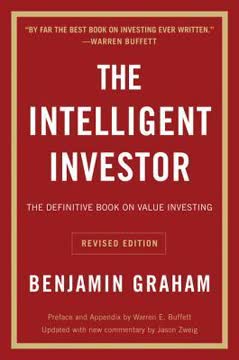
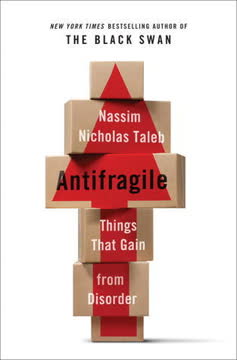
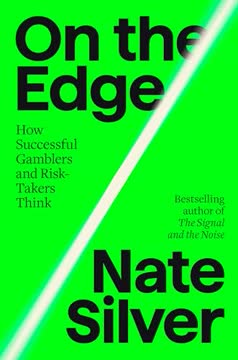

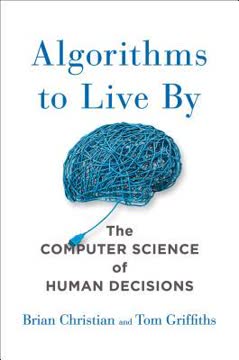
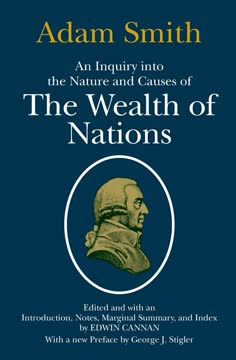
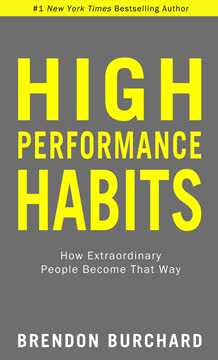

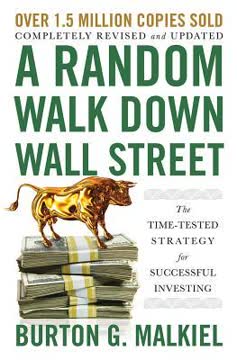
Download PDF
Download EPUB
.epub digital book format is ideal for reading ebooks on phones, tablets, and e-readers.













